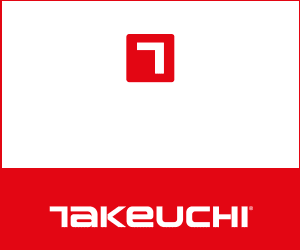The global coronavirus pandemic has led to considerable debate about the future of today’s transport systems. Photographs in the news of crowds using buses, trains and planes jar with people who have rapidly become used to social distancing. The need to remain at home has raised questions about what travel is really essential and city-dwellers have welcomed the respite from air pollution as traffic volumes plummet.
This article was first published in the June 2020 issue of The Construction Index Magazine. Sign up online.
Recent years have seen multiple initiatives under way to develop a new form of transport, hyperloop, in which capsules would whizz through tubes at speeds of 1,000km/h or more. Short test tracks are in operation and longer ones are planned. Feasibility studies have been undertaken for routes in various locations including the USA, Netherlands, India and Abu Dhabi, with the positive results holding the promise of commercial development.
The pandemic might well slow down some of the individual projects, but the companies involved remain convinced that their fundamental arguments in favour of hyperloop are unaffected – or might indeed have been boosted.
Hyperloop capsules will glide at high speed, propelled within a tube by a linear electric motor. There is almost no friction, thanks to the removal of most of the air in the tube and the use of magnetic levitation to make the capsule float. This reduces drag and minimises the amount of electricity needed to achieve the high speeds. Sustainability credentials can be boosted further through the use of renewable energy sources: for instance, the tubes could be covered in solar panels.

“What is so exciting about hyperloop is that it could totally transform the way a country, a city or a major hub like an airport operates,” says Lara Tabet, senior engineer with Arup’s Infastructure London Group and the company’s hyperloop global coordinator. “The objective of achieving the speed of rail travel with the convenience of metro systems is highly attractive. For me, the key will be in integrating a hyperloop solution within the wider transport context that it will sit in and with the other transport modes that are or will be operational around it. It is not here to replace all other modes of transport but to complement and even augment them.”
Development is concentrated in half a dozen hyperloop promoters around the world, each working to implement its own version of the technology and move forward with projects.

One of the European proponents is Spanish company Zeleros. “There are great challenges for conventional means of transport to adapt to future trends,” says co-founder Juan Vicén. Hyperloop is energy efficient, he says, and is able to offer zero-emissions in operation while reducing infrastructure and maintenance costs. Vicén sees the ideal route as linking cities or logistic hubs 500-1,500km apart. But the real strategy must be to create a hyperloop network, enabling the progressive extension of routes to other cities and hubs. He believes that the first commercial routes for cargo can be ready from 2024-25 and for passengers from 2030 onwards.
The long-term impacts of Covid-19 on mobility remain to be seen. “However, one thing that can’t be ignored is the dramatic reduction in carbon emissions it has caused,” says Tabet. “You may see governments and companies accelerate their decarbonisation plans - if this does turn out to be the case, hyperloop makes an excellent candidate for investment.”
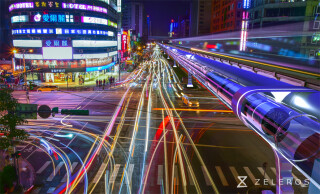
Andres De León is CEO of HyperloopTT, which has offices in the USA, France, Dubai, Spain and Brazil. “I’m very optimistic about what is going to happen with hyperloop in a post-pandemic scenario,” he says. In the short term, there are likely to be delays on activities. “But in the middle term and long term we really believe that this unfortunate crisis – of course nobody wants to have this kind of crisis, with people dying – will help to push infrastructure and in particular hyperloop.” He believes that the only way to emerge from the crisis will be for governments to invest heavily in infrastructure; something that is already happening in some countries.
There is a need for infrastructure that can move people in a way that is both efficient and sustainable, he says. “There are a lot of voices we are starting to hear, saying that this crisis is also an opportunity to accelerate these ideas, to improve passenger journeys and the ways that people travel,” he says.
He says that hyperloop can be used to solve the biggest problems in transport: the lack of efficiency, the lack of a pleasant passenger experience and the lack of sustainability. “There are a lot of voices we are starting to hear, saying that this crisis is also an opportunity to accelerate these ideas,” he adds.
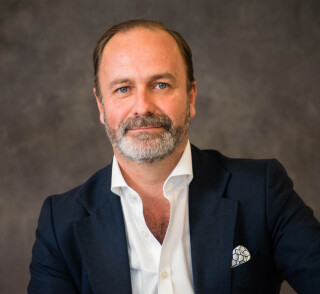
Starting hyperloop’s development from scratch has given the opportunity to address aspects such as safety, air quality and the overall passenger experience without needing to adapt existing approaches.
Each company had been thinking about compartment sizes long before coronavirus, but the capacities could suit current thoughts. HyperloopTT’s plan is for capsules containing a maximum of 30 to 50 people rather than the hundreds on a plane - but there will still be a big throughput as there can be a departure every 40 seconds, De León points out.
Virgin Hyperloop One (VHO) has seen continued interest and enthusiasm from its public and private partners during the pandemic says its head of marketing and communications Ryan Kelly. “There is a general understanding that when this is all over, we will need to rebuild,” he says. “If we are investing, let’s invest smart.”
He adds: “We believe hyperloop is the giant leap forward we need. We haven’t had a new form of mass transportation in over 100 years. We know adding another lane on a highway has diminishing returns. We know cities are going to continue to grow, shipping logistics are more important than ever, pollution and congestion are real, and that transportation is a huge factor.”
VHO sees hyperloop as inherently adaptable and suited for the post-virus world. “Of course, we can also incorporate trends we are already seeing in the transportation space from ‘touchless’ everything, to antimicrobial materials, to fast sterilisation of pods using UV or other technology,” he adds.
The concept of hyperloop was championed by tech entrepreneur Elon Musk, who has encouraged others to take forward the implementation. Musk set out his ideas in a paper published in August 2013, though he acknowledged earlier thoughts along similar lines. His SpaceX business still maintains an interest, running regular competitions in which self-propelled pods built by student teams are tested along a mile-long tube.
To date the competition has been won each time by the same team from the Technical University of Munich (TUM Hyperloop). The team’s latest entry reached a top speed of 288mph.
But SpaceX is not the only organisation to have organised a hyperloop competition. In 2016, VHO ran a global challenge to identify promising hyperloop routes around the world. More than 2,600 teams registered and the field was narrowed to 35 before 10 winning routes were selected, including two in the UK – Edinburgh to London and Glasgow to Liverpool. Many of VHO’s current routes have stemmed from the 2016 Global Challenge, which led to connections with public and private partners around the world.
There doesn’t yet seem to have been much discussion of hyperloop for the UK but those involved see potential. “In a sense, a hyperloop system in a heavily populated country like the UK makes sense, because the infrastructure can be put in tunnels, where it causes less impact on the townscape and the countryside,” says Tabet.
“Nevertheless, we are blessed in the UK with a comprehensive rail network that is about to be further supplemented with investment in high-speed rail, and with our major centres being so close to one-another, it is always going to give hyperloop a run for its money.” The big opportunity lies with linking places that have potential for high demand, but don’t yet have a high-speed connection, and in augmenting what we already have or will have, she says.

HyperloopTT has had some preliminary discussions regarding a UK system. “We think there is a future in the UK for us,” says De León. He sees hyperloop and high-speed rail living together.
Further development of the technology is needed before the first shovels hit the ground for hyperloop projects anywhere. Testing, certification and regulation will be key in unlocking the next steps.
A number of hyperloop companies have already built prototypes to develop their systems. More extensive centres are now being developed, including in Europe and the USA. The opening of longer test tracks will be a key step towards the introduction of commercial routes for passengers or freight.
One of HyperloopTT’s key areas of current focus is its certification centre in Toulouse, where its technology is being developed and tested using a 320m-long test track. Aspects already in operation include those related to the vacuum and capsule, with the company now working on integration of the propulsion and levitation systems. The aim is for these to be finalised within the next nine months to a year. The coronavirus situation has delayed some of the integration being done there, but not substantially, he says.
In parallel, another of HyperloopTT’s focus areas is its first commercial prototype, which will be in Abu Dhabi. Visitors to a centre showcasing the future of mobility will be able to travel there on a 5km hyperloop. “This project is designed to show not only that hyperloop works but that it works reliably and can move the passengers,” says De León. He says that the concept design has been finalised and that work is starting on the detailed engineering and securing the funding. His optimistic timescale for it to come into operation is two and a half to three years – though his pessimistic one is, at four years, not too far behind.
Zeleros is preparing the construction of a European hyperloop research centre and multi-kilometre test-track in Spain. It has recently developed prototypes of each relevant subsystem that will be integrated into a 1:3-scale pod to be tested at 500km/h.
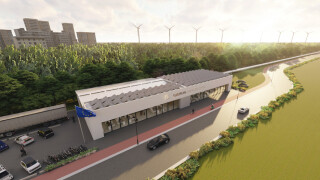
Another company, Hardt Hyperloop, announced in December its plans for a centre in the Netherlands. The idea is for its European Hyperloop Center to be open to developers from all over the world. There will be a 3km test track as well as a hub focusing on standardisation, safety standards and the passenger experience. Initial partners include Royal BAM Group, Tata Steel Europe and Royal IHC. Construction is due to start this year for completion in 2022.
Although the hyperloop companies are developing proprietary approaches, there has been some cooperation. Zeleros and Hardt are part of a consortium of four hyperloop companies (the others are Hyper Poland and TransPod) working with the European Commission and national standardisation bodies to develop standards and regulations (see TCI magazine March 2020, page 11). The consortium points out that, without common standards, it would be difficult and expensive to transport passengers and freight from one country to another.

One of the key areas of current activity for VHO is the development of a US certification centre, including a track that is expected be about 10km to 16km long. VHO’s existing 500m hyperloop test track, DevLoop, came into operation three years ago in Nevada, USA. The aim is for the new centre to help achieve key technological milestones – such as faster speeds – as well as more political ones, like creating a national framework for safety certification. The idea has proved popular: 17 states submitted formal responses to the request for proposals, issued in November 2019. “When this pandemic hit, we wrote to every one of the states we are working with and asked them how they felt about continuing this process given present challenges,” says Kelly. “Every single one of the states said, ‘yes, we want to do this’. This is a sign that states are thinking critically about the long-term future and how to invest in an economy that can meet 21st-century challenges.”

Tabet believes the centre will potentially accelerate progress in the hyperloop market as certification and regulation are often the main blockers to the implementation of technology, she says.
Predicting the pace of roll-out of hyperloop is difficult, particularly now that everyone is aware how rapidly the world can change.
Arup is on the technical advisory board of VHO, and has advised other clients on the commercial feasibility of a hyperloop system. It has also researched the cost base of hyperloop, which has led to the production of a product due to be launched soon. ‘Hyperloop in a Box’ is designed to inform clients on the viability and maturity of a hyperloop proposition for a specific route.
Viable distances are likely to depend on what the route is trying to achieve. When it is about connecting cities, 100km would be a starting point, says Tabet, as cars and conventional rail have it covered for anything less than that. “However, there are various use-cases for hyperloop that are quite different to that,” she says.
For example, connecting airports together may replace airport expansions; connecting airports to ‘park and ride’ locations may reduce road traffic and make an airport more accessible; connecting a main port to cheaper land a little further away could significantly enhance the port storage and logistics strategy. These use-cases are not as reliant on minimum distance, she says.
Other uses of hyperloop for freight could include the transport of time-sensitive goods such as medicine or perishables.
Shipping logistics company DP World is a major investor in VHO. In 2018, the two companies announced DP World Cargospeed, a partnership to provide hyperloop-enabled cargo deliveries.
One of the routes being developed by VHO would reduce journey times from central Pune, in India, to Mumbai to 25 minutes, as opposed to the current 3.5 hours or more by road. The Maharashtra state government has approved the Virgin Hyperloop One-DP World Consortium as the original project proponent.
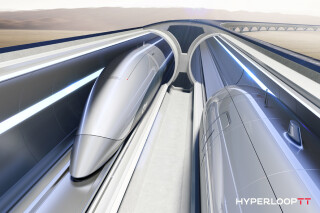
VHO announced in February that that it is to work in partnership with Saudi Arabia’s Ministry of Transport to carry out a national hyperloop study covering the transport of both passengers and cargo.
A current area of focus for HyperloopTT involves using the technology to move containers. The engineering and business case is being developed in partnership with the Port of Hamburg’s terminal operator Hamburger Hafenund Logistik Aktiengesellschaft in a 50:50 joint venture.
Demonstration of the system is planned for next year, says De León.
The company is also working on two projects relating to a full mass transport system. One is for high-speed transport in the UAE between Abu Dhabi and Al Ain. A feasibility study was carried out more than two years ago with Abu Dhabi’s Department of Transport (DoT). De Leon says that it was the first such hyperloop study paid for with public money, which also meant that the findings were robustly challenged. The study demonstrated the economic viability of the system, showing that it would pay for itself within 15 years, he says.
The other project centres on the Great Lakes region of the USA. The publicly-funded study, which was published in late 2019, determined that a system connecting Cleveland, Chicago and Pittsburgh would be both feasible and of great economic benefit regionally, also bringing environmental gains.
Virgin Hyperloop One announced in February that that it is to work in partnership with Saudi Arabia’s Ministry of Transport to carry out a national hyperloop study. Under the partnership, VHO will conduct a pre-feasibility study on the use of the technology for the transport of passengers and cargo. VHO has said that a hyperloop in the region could be powered entirely by solar panels covering the tube.
One of the routes being developed by VHO would bring journey times from central Pune to Mumbai in India down to 25 minutes, as opposed to the current 3.5 hours or more by road. The government of the state of Maharashtra has already deemed hyperloop a public infrastructure project and approved the Virgin Hyperloop One-DP World Consortium as the original project proponent.
Vicén says that Zeleros has a strong focus on safety standards and reducing infrastructure costs. The company plans operation at pressures similar to aviation, rather than ones more related to space. “Our vehicle technologies can effectively reduce infrastructure costs and enable operation at safer pressures for the passengers,” he says. “By means of eliminating linear infrastructure from the track, our technology will be able to achieve similar costs to high-speed rail but at much higher speeds, integrating the propulsion and levitation technologies in the vehicle.” This approach will also enable simplified maintenance and a reduced energy consumption, minimising operating expenditure, he says.
Hyper Poland is adopting a phased approach to the development of hyperloop, initially making use of existing railway infrastructure. To begin with, its ‘magrail’ technology, dispensing with hyperloop’s low-pressure tube, would allow vehicles to travel at speeds of up to 415km/h on the existing, modernised infrastructure, with regular trains continuing to operate. “We are the only company in the world able to gradually implement hyperloop-inspired solutions as an upgrade for the railway industry,” it says.
Its magrail technology is, like hyperloop, based on magnetic levitation, linear motors and autonomous control systems – but without the low-pressure tube. Magrail makes it possible to adapt existing railway infrastructure to cater for magnetic levitation, says Hyper Poland.
The second step is ‘hyperrail’, which wouldwill require the construction of vacuum tunnels, giving over the magrail infrastructure. This would allow a top speed of up to 1,000km/h, says Hyper Poland. It says that its approach significantly reduces implementation costs and time, compared to greenfield hyperloop deployment. Hyperloop forms stage three of its commercialisation strategy and would enable the magnetic capsules to reachaccelerate to speeds as high as 1,200km/h on new infrastructure.
Netherlands-based Hardt published new research in April that identified a host of economic benefits arising from a system that would serve the Amsterdam metropolitan area and include international links with Düsseldorf, Frankfurt and Paris. “The potential size of the working-age population would be considerably expanded if Amsterdam was connected to Groningen, The Hague and particularly regions such as the Ruhr area,” said the study. The hyperloop would create a compact region of cities on five routes, all within a one-hour door-to-door travelling distance, it said.
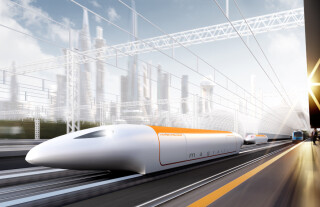
BUILDING HYPERLOOP
Most images of hyperloop systems show the tubes carried on columns, though they could also be tunnelled or run at grade.
The tube is a special item in the construction of a hyperloop system. It needs to be designed for a high differential between the atmospheric pressure outside and the near-vacuum pressure inside. In addition, the leakage ratio of the material is key to reducing operational costs. There is a balance to strike between the capital cost and the operational cost incurred to pump the air out of the tube. “Some hyperloop technology companies have stated that they are researching new materials for the capsule,” she says. “These may also be relevant to the tube.”
Spanish firm Zeleros proposes to work at similar pressures to those already certified – akin to aviation, rather than space. This would reduce the work that pumps need to do to extract the air and result in an easier regulatory framework, says Zeleros founder Juan Vicén. “Our vehicle technologies can effectively reduce infrastructure costs and enable operation at safer pressures for the passengers,” he says.
“By means of eliminating linear infrastructure from the track, our technology will be able to achieve similar costs to high-speed rail but at much higher speeds, integrating the propulsion and levitation technologies in the vehicle.” The approach will also simplify maintenance and reduce energy consumption, says Vicén.
A question that Arup raised quite early on was one around how straight the tube needs to be. “At that speed, height differences or a sharp curve would be very uncomfortable,” says senior engineer Lara Tabet. “Naturally, as structural engineers, we quickly try to work out whether the requirements of the technology would be achievable. However, we tend to forget that the pod is levitating and that there is no physical contact between the pods and the tube.
“This balances out the impact that the speed would have. There are clever ways of manipulating the magnetic field to make the levitation smoother, which is why a close collaboration between transport consultants, engineering firms and technology companies is key to making hyperloop schemes a reality."
Zeleros’ objective is to simplify infrastructure complexity and construction, reducing maintenance processes and the active components that greatly increase the cost per kilometre, says Vicén. Regarding pressure levels, Zeleros proposes to work at similar pressures to those already certified, resulting in an easier regulatory framework, and also reducing the work that vacuum pumps need to do to extract the air out of the tube, he says.
Foundations will vary depending on the topographic profile and seismic zone, he adds, and the span lengths will be in the order of 25 metres. He envisages construction costs being quite similar to the current high-speed railway industry.
UK readers can have their own copy of the magazine, in real paper, posted through their letterbox each month by taking out an annual subscription. Click for details.
This article was first published in the June 2020 issue of The Construction Index Magazine
Got a story? Email news@theconstructionindex.co.uk

